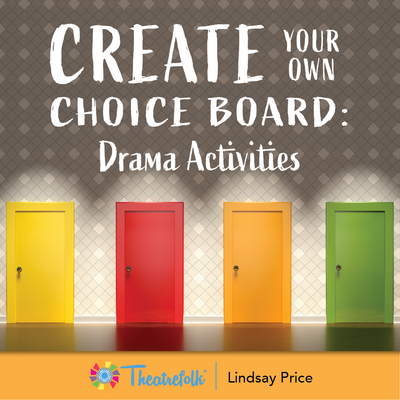Small Ways to Connect with Your Students During Distance Learning
Let’s not mince words — distance learning is challenging. Teachers and students alike are missing out on that “real life” connection that in-person drama class provides, it’s hard to bond when cameras are off and mics are muted (let alone when someone’s internet connection drops out), and it can be difficult to focus at home. However, it’s definitely still possible to form genuine connections with your students during distance learning, and it doesn’t require grand gestures. Try these suggestions for small ways to connect with your students during distance learning, and remember — small gestures add up to big results.
Do a quick check-in at the beginning and end of each class. At the start of class, ask students how they’re feeling, using a system like thumbs-up/thumbs-down or rating from 1 to 5. If your students have their cameras on but are muted, they can physically signal using gestures. If students have their cameras off, they can reply in the comments area or chat box. Check in again at the end of class and see if students’ feelings have changed. Hopefully they’ve improved throughout drama class!
If time allows, give students a few minutes to talk amongst themselves at some point during the class, while you just sit and listen. Your distance learning students are most likely craving connection, so giving them a few minutes to bond with their classmates will be appreciated.
Ask students warm-up questions to help you get to know them better. Keep it light. What’s their favourite movie? Do they have any pets, and if so, what kind of pet? Have they ever seen a live theatrical production? If they could have any superpower, what would they choose? If they could have any job in the performing arts industry, what would they do and why? Listen carefully to their responses. If you can, take notes on what your students say, and think of ways you can incorporate their likes and dislikes into your lessons. For example, you could have students create one-minute summary scenes of their favourite movies, or write a monologue from the perspective of their pet. Click on the giveaway at the bottom of this post for a free list of warm-up questions.
Give students a genuine compliment. Here are 20 ways to praise your students. You can send students a private message, or write your praises on Post-it Notes and put them on the wall behind you, so everyone can see them on your screen.
You can also have your whole class do “Warm Fuzzies” (you can find the instructions here. Have students write a Warm Fuzzy for each student in the class, and submit their lists to you. Amass all the Warm Fuzzy comments into a separate document for each student and send the documents to them. Be sure to include some Warm Fuzzies of your own to each student. (If you don’t have time to amass a classful of Warm Fuzzies, you could assign each student a Warm Fuzzy Buddy to compliment Secret Santa-style.)
Send a funny e-card to your students. You don’t need to have a reason — “Happy Thursday” can work just fine, and would be a nice surprise for students to find in their inboxes. Include a few positive words, maybe an inspiring quote, or a theatre joke. For example: “A friend was in a theatre production about English language puns. It was a play on words.”
Smile during your classes! A genuine smile can go a long way.
Lead students in a relaxation, breathwork, or meditation exercise. Help them let go of their stress and anxieties and be in the present moment, even if only for one minute. Discuss how these mindfulness activities benefit students both in the drama classroom and in the “real world.”
Take a break. Again, if time permits, and depending on how long your classes are, allow students a couple minutes in the middle of class to run to the washroom, grab a snack, and recalibrate before they have to sit upright and focus. Hopefully they will be refreshed and ready to work. At the very least, your students will know that you know they need a couple minutes to reset and refocus.
Work on active listening exercises with your students. When students feel like they’re being listened to, they feel respected and appreciated. Here are a bunch of great active listening exercises that can easily be adapted to the virtual classroom, or done in smaller virtual breakout rooms. Start with The End of the Word, Learn About, or Conversation Pause.
Related Articles
Create Your Own Choice Board: Drama Activities
by Lindsay Price
Choice boards give students the opportunity to choose how they want to learn a particular subject. Create Your Own Choice Boards: Drama Activities can help encourage your students' independence by allowing them to take an active role in their learning.
Distance Learning
by Christian Kiley
A play about trying to survive and thrive in a virtual classroom.





